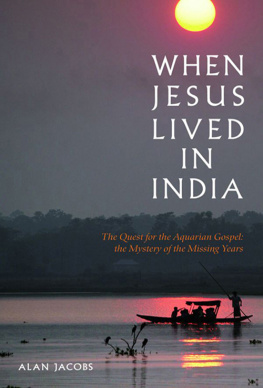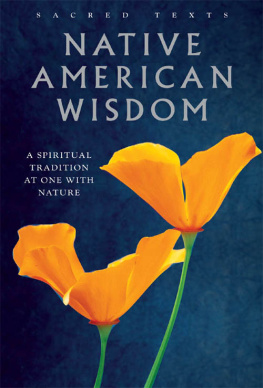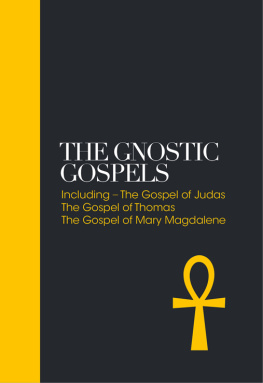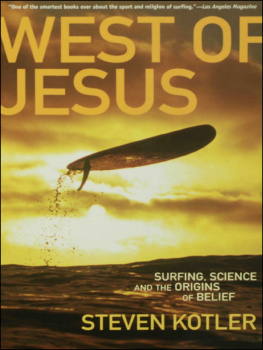Alan Jacobs has made a lifelong study of mysticism and is a regularly published author and poet. He is the editor of Poetry for the Spirit, Tales from Rumi, Native American Wisdom and the beautiful poetic translations of The Upanishads and The Gnostic Gospels, later expanded into The Essential Gnostic Gospels. He lives in London.
By the Same Author
Poetry for the Spirit
The Bhagavad Gita, A Poetic Transcreation
The Principal Upanishads, A Poetic Transcreation
The Wisdom of Balsekar
The Gnostic Gospels, A Poetic Transcription
The Ocean ofWisdom
The Spiritual Wisdom of Marcus Aurelius
Myrobalan of the Magi
Ramana, Shankara and the Forty Verses
The Essential Gnostic Gospels
Tales from Rumi
The Gnostic Gospels
The Upanishads
Native American Wisdom
Mastering Music Walks the Sunlit Sea
WHEN
JESUS
LIVED IN
INDIA
The Quest for the Aquarian Gospel:
the Mystery of the Missing Years
Alan Jacobs

Acknowledgements
To Michael Mann for encouraging me to write this book. To the staff of The British Library for greatly assisting my research.
The author and publisher wish to thank all those copyright holders, too numerous to mention, who have given permission for an extract of their work to appear. If, however, there are any omissions we will be pleased to correct the matter in any future editions.
History is only legend that is agreed upon.
Anon
The value of myth is not in its truth as fact, but in its truth as meaning.
Michael Horan
We have to learn to let God show us what he wants us to see.
Karl Barth
Wise Men came from the East to the cradle of the infant Christ. Is it not time that we paid them a return visit?
Dean Inge
And there are also many other things which Jesus did, which, if they should be written every one, I suppose that even the world itself could not contain the books that should be written.
John Chapter 21 verse 25
Introduction
W hen Jesus Lived in India. At first sight such an extraordinary title seems a bizarre fantasy, a preposterous historical impossibility, some exotic romantic dream! However, surprising as it may seem, this is not at all the case, and it is far from being an eccentric, fanciful speculation. This legend has been generally accepted in Tibet, Nepal, northern India and Kashmir for over 2,000 years. There, not only do scriptural and archaeological evidence exist, but the legend is so firmly rooted in popular folk memory that it is regarded as a certainty. Of course, in the Western Christian world such an idea has been disregarded, and even condemned, as it totally contradicts the accepted scriptural life and crucifixion of Jesus.
Yet this startling idea has been circulating since the 19th century amongst academic and biblical scholars in Europe, America and India, and is soon to confront the world in the form of a film which portrays Jesus life and mission in India, Tibet, Nepal and elsewhere.
The American and Indian film industries have at last joined together to make a religious epic entitled The Aquarian Gospel. It fills in the missing years of Jesus in India, Tibet, Nepal, Kashmir and elsewhere, from the ages of 12 to 30, when the boy grew in stature and wisdom as it is written in the New Testament gospels. The film is expected to arouse the same interest and debate as the famed Da Vinci Code. It is based on The Aquarian Gospel and Holger Kerstens book Jesus Lived in India. Both of these works I will be discussing fully.
This will not be the first film to cover this fascinating subject. Movie director Paul Davids has made a film entitled Jesus in India which tackles the provocative task of separating myth and legend from historical evidence. In this film, an adventurer called Edward Martin determines to visit the Hemis Monastery to find the Missing Gospel of Issa. There is much discussion in the film, for and against the hypothesis, by various experts including the Dalai Lama, biblical scholar Elaine Pagels, Muslim scholar Arif Khan, and Monsignor Corrado Balducci, Apostolic Nuncio of Pope John Paul II. In addition to these two films, Indian producer Subhrajit Mitra has made a movie entitled The Unknown Stories of the Messiah, which covers the same ground as Holger Kerstens book Jesus Lived in India. A documentary film was also made by Richard Bock in 1975, called The Lost Years of Jesus, in which he followed Nicolai Notovitchs journey through India and Tibet. The film includes an introduction from Professor John C Trever of the Claremont School of Theology, and the actor William Marshall reads from the Gospel of Issa. Janet Bock has written an accompanying book called The Jesus Mystery. There is also an entertaining novel called The Rozabel Line by the Indian writer Ashwin Sanghi, published in 2007. This is a murder mystery but manages to incorporate most of the story of Jesus in India in its pages. The Bibliography lists many of the growing number of books relevant to this whole controversial question.
It is the purpose of this book to take a long, hard look at the whole question of whether Jesus did or did not visit India and Tibet. I shall present impartially all the evidence for and against such a supposition, which I gathered after lengthy research, so that the reader can form his own reasoned judgement on this tantalizing theory which has stimulated filmmakers, authors and biblical scholars, both in the East and West, for over a century.
Astonishingly, no details are given by the Four Evangelists as to where Jesus went and what he did to increase in stature during these entire 19 years! It is one of the great biblical and historical mysteries. Many theories exist about how Jesus could have spent his adolescence and entry into manhood, and I shall examine the most important of them, as well as the Indian and Tibetan legends, as our book proceeds. Islamic scholars have a great deal to say on this topic which I shall also review.
However, the modern, apocryphal Aquarian Gospel, rather than the ancient canonical gospels, tells us in precise detail all about Christs mission to India, Tibet and Nepal, and his adventures there. The actual historical and archaeological evidence that Jesus may have indeed spent his missing years in Tibet, Nepal and Kashmir, was first brought to light in the late-19th century by the then famous Russian author and explorer, Nicolai Notovitch. It is on Notovitchs discoveries, along with the Aquarian Gospel, that the latest motion picture has been based.
This legend first caught my imagination when I was last in India. I read about the proposed film and I was inspired to write and research a book which would impartially investigate all the evidence, so as to leave the inquisitive reader in a position to decide the truth or falsehood of such an idea. My research has been a fascinating journey of discovery, which I have endeavoured to convey in a straightforward manner. I include many references from the considerable literature which has appeared on this enthralling subject. It has been for me, more in the nature of an investigative detective story, rather than a scholastic examination.
It is essential in this present era when humanitys religious faith is being undermined by sceptics and atheists in the name of science, that the real facts about Jesus actual life are brought closer to the light, so that we can begin to separate myth and legend from history. Although one book cannot solve this great problem conclusively, it raises the discussion to a level where the interested reader will find enough information to make reasonable judgements for him- or herself.















